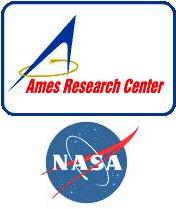 ERE (The Entropy Reduction Engine) is an architecture designed to integrated planning, scheduling, and control in the context of closed-loop execution, developed by Mark S. Drummond, John L. Bresina, and Smadar Kedar, as well as other researchers at the NASA Ames Research Center, Moffett Field, California, USA.
ERE (The Entropy Reduction Engine) is an architecture designed to integrated planning, scheduling, and control in the context of closed-loop execution, developed by Mark S. Drummond, John L. Bresina, and Smadar Kedar, as well as other researchers at the NASA Ames Research Center, Moffett Field, California, USA.
ERE Architecture
Общие сведения
The Entropy Reduction Engine (ERE) [Drummond, Bresina, & Kedar, 1991] включает долгосрочную память для операторов предметной области, описывающих последствия действий, область и ограничения поведения, а также правил управления, зависящих от ситуации, которые предлагают меры для достижения целей, и правил редукции энтропии, которые производят декомпозицию сложных задач на более простые.
Архитектура использует свои операторы и ограничения, чтобы производить временные прогнозы, компилируемые затем в правила управления, которые интерпретатор “распознавание-действие” использует, чтобы определить, какое действие надо выполнить.
К процессу прогнозирования добавлен модуль редукции задач, который использует правила декомпозиции, чтобы ограничить его поиск.
Успешные результаты прогнозирования принуждают систему обучаться новым правилам управления, тогда как неудачи прогнозирования приводят к исправлению операторов и ограничений предметной области.
Description
The Entropy Reduction Engine [Drummond, Bresina, & Kedar, 1991] includes long-term memories for domain operators that describe the effects of actions, domain and behavioral constraints, situated control rules that propose actions to achieve goals, and reduction rules that decompose complex problems into simpler ones.
The architecture uses its operators and constraints to produce temporal projections, which it then compiles into control rules that a recognize-act interpreter uses to determine which actions to execute. The projection process is supplemented by a problem reduction module, which uses the decomposition rules to constrain its search. Successful projections lead the system to learn new control rules, whereas prediction failures lead to revision of operators and domain constraints.Entropy Reduction Engine Architecture
Characteristics:Architectural Details
Capabilities
Properties
Environments
Selected publications
Selected Publications
http://ti.arc.nasa.gov/profile/bresina/publications/
Drummond, M., Bresina, J., & Kedar, S. (1991). The Entropy Reduction Engine: Integrating planning, scheduling, and control. SIGART Bulletin, 2, 61–65.



